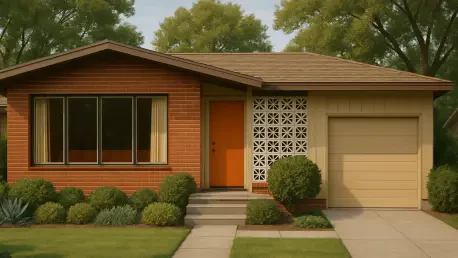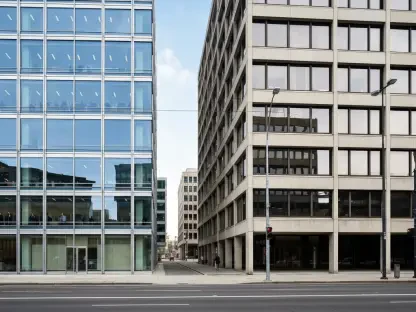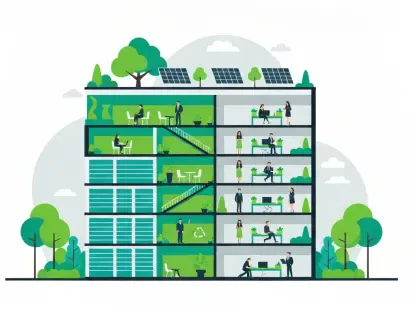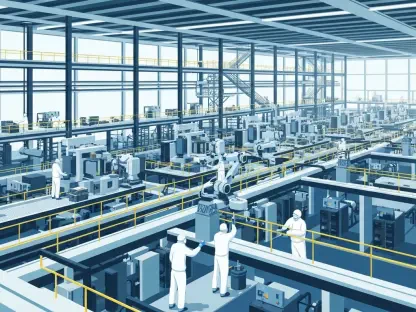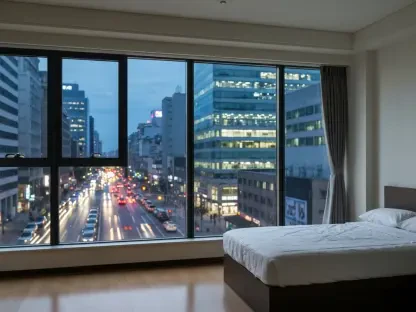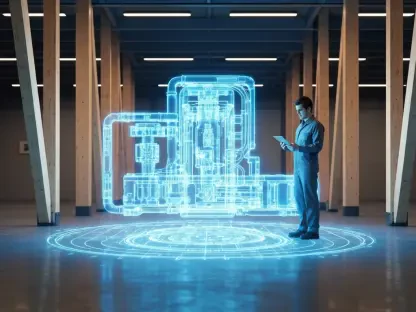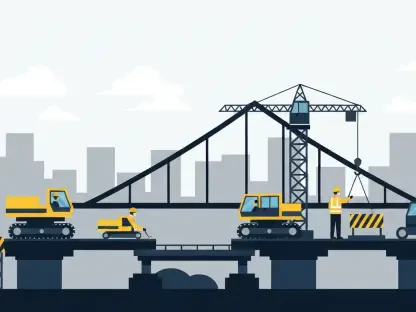Imagine walking down a suburban street where every home looks like a carbon copy of the next—neutral tones, minimalist designs, and a distinct lack of character. For years, this uniformity dominated exterior home design, prioritizing simplicity over individuality. However, a refreshing shift is underway as homeowners and designers alike are turning back the clock to embrace retro aesthetics, infusing them with contemporary flair. This resurgence isn’t just about nostalgia; it’s a bold statement against blandness, reflecting a desire for homes that tell a story through vibrant colors, intricate details, and regionally inspired elements. Industry experts have noted this growing trend, highlighting how once-outdated styles are being revitalized to suit modern tastes and practical needs. From earthy hues reminiscent of decades past to architectural features that add depth, the revival of these designs is reshaping curb appeal across neighborhoods, proving that the past can indeed inform a stylish present.
Vibrant Colors Redefine Facades
A striking departure from the sea of whites and grays that have long ruled home exteriors, vibrant colors are staging a powerful return, drawing inspiration from the bold palettes of the 1970s and 1990s. Homeowners are gravitating toward warm earth tones, deep greens, teals, and blues to inject personality into their properties. This shift isn’t about haphazardly splashing color; it’s a thoughtful approach where multiple shades are coordinated to create a cohesive and sophisticated look. Think of a sunny yellow facade paired with blue trim or brown siding accented by sage window frames. Such combinations allow homes to stand out while maintaining an elegant balance. Designers emphasize that this trend reflects a broader cultural move toward self-expression, where the exterior becomes a canvas for individuality. As a result, streets are becoming more visually dynamic, with each house showcasing a unique identity that breaks free from the monotony of minimalist design norms.
Beyond the aesthetic appeal, the return of vibrant colors also speaks to a renewed appreciation for historical context in design. These retro hues often evoke specific eras or regional styles, connecting homes to their cultural or environmental surroundings. For instance, earthy tones might nod to natural landscapes, while brighter shades could recall the playful optimism of mid-century architecture. Designers are also adapting these colors to modern sensibilities by pairing them with sleek, updated materials or minimalist landscaping to avoid an overly dated feel. This careful balance ensures that the boldness of the palette enhances curb appeal without overwhelming the eye. Moreover, advancements in paint technology mean these colors are more durable than ever, resisting fading and weathering to keep exteriors looking fresh for years. This trend underscores how homeowners are willing to take risks, prioritizing personal style over safe, neutral choices that once dominated the housing market.
Architectural Details Add Depth and Charm
Once dismissed as overly decorative or impractical, detailed architectural features are experiencing a renaissance, bringing texture and visual interest back to home exteriors. Elements like shutters, window boxes, exposed rafter tails, and ornate trim are no longer seen as relics of the past but as opportunities to elevate a property’s character. However, this revival isn’t a mere copy of old styles; it’s a reinvention with modern updates. Shutters, for example, are now designed with slimmer profiles and painted in contemporary shades to feel intentional rather than purely functional. Similarly, trim work is being used sparingly to highlight specific areas rather than covering every edge. This approach adds depth to facades while maintaining a clean, updated appearance that resonates with today’s aesthetic preferences. Homeowners are finding that these small touches can transform a plain exterior into a standout design.
The appeal of these architectural details lies in their ability to blend nostalgia with practicality, offering both beauty and purpose. Window boxes, for instance, not only enhance visual charm but also provide space for greenery, contributing to a home’s connection with nature. Exposed rafter tails, often associated with craftsman-style homes, are being reintroduced in ways that complement modern rooflines, adding a subtle rustic touch without overpowering the overall design. Designers note that these features are often tailored to suit the home’s architecture, ensuring they feel authentic rather than tacked on. This thoughtful integration reflects a growing awareness of how details can tell a story about a home’s history or the owner’s personality. As more people seek to differentiate their properties from mass-produced designs, these revived elements are proving to be a timeless way to achieve uniqueness and charm in exterior aesthetics.
Sustainable and Regional Design Takes Center Stage
A growing emphasis on site-specific architecture is reshaping how homes are designed, with a focus on styles that harmonize with local climates and cultural contexts. After years of adopting impractical trends—such as all-glass facades better suited to certain environments—there’s a renewed push for vernacular designs that prioritize functionality and sustainability. This means using local materials and architectural forms that naturally adapt to the surrounding conditions, whether it’s a pitched roof to handle heavy snowfall or shaded porches for hot, sunny regions. Such choices not only enhance a home’s environmental compatibility but also create a sense of authenticity, making the property feel rooted in its location. Designers are championing this approach as a way to move beyond generic styles, ensuring exteriors are as practical as they are visually appealing.
This trend toward regional relevance also ties into broader environmental consciousness, as homeowners seek to reduce their ecological footprint through thoughtful design. Incorporating locally sourced materials like stone or reclaimed wood cuts down on transportation emissions while adding a unique, grounded aesthetic to the home. Additionally, these designs often require less maintenance or energy for climate control, thanks to their adaptation to local weather patterns. Beyond sustainability, this focus allows for a revival of traditional building techniques that have been overlooked in favor of mass production. By blending these time-honored methods with modern innovations, such as energy-efficient windows or updated insulation, homes achieve a balance of old-world charm and contemporary efficiency. This movement highlights a deeper appreciation for context in design, encouraging exteriors that resonate with both the environment and the community they inhabit.
Blending Nostalgia with Modern Innovation
Looking back, the journey of home exterior design reveals a fascinating interplay between honoring the past and embracing the present. The revival of vibrant colors paints neighborhoods with personality, while architectural details restore a sense of depth to facades once deemed too plain. Meanwhile, the shift toward regional and sustainable design grounds homes in their surroundings, reflecting a commitment to both authenticity and environmental care. Each trend, from painted brick updates to streamlined wrought iron elements, demonstrates how retro styles are thoughtfully adapted to meet contemporary demands. This transformation showcases a collective desire among homeowners and designers to move beyond uniformity, crafting exteriors that tell unique stories. As these once-outdated aesthetics find new life, they redefine curb appeal, proving that history can seamlessly inform modern living with a touch of creativity and intentionality.
